Caves 🢔 Geological wonders 🢔 Categories of wonders
Wonder
Ochtinská Aragonite Cave (Ochtinska Aragonite Cave)
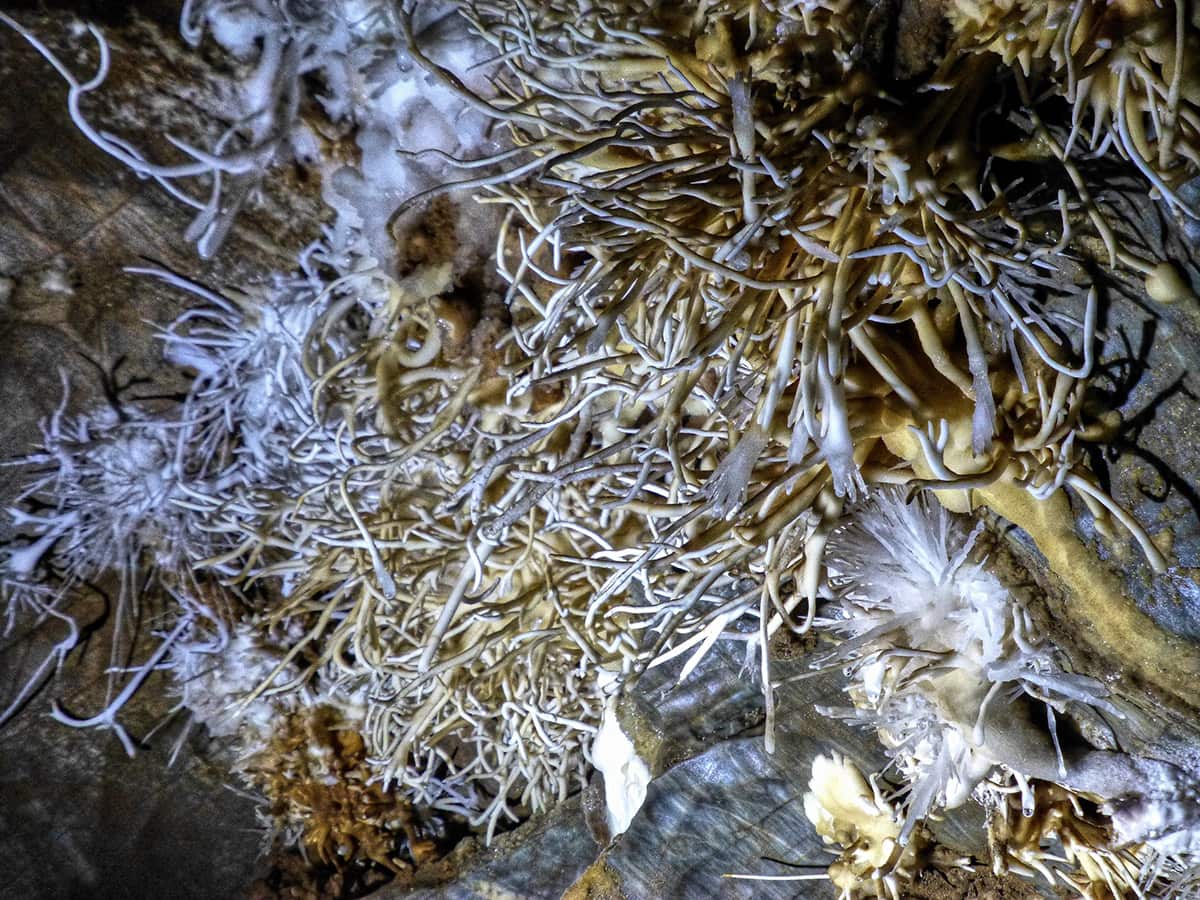
 In short
In short
There are some caves in the world which are adorned with very unusual crystals formed from aragonite. The best known aragonite cave is Ochtinská Aragonite Cave (Ochtinska Aragonite Cave0 in Slovakia. It is only some 300 m long but its beauty is admired by more than 30,000 visitors per year.
 43.8%
43.8%
GPS coordinates
Name in Slovak
Alternate names
Type
Length
UNESCO World Heritage status
Map of the site
If you see this after your page is loaded completely, leafletJS files are missing.
 In detail
In detail
Aragonite cave
In Slovakia are known more than 4,250 caves (1). Many of these caves are beautiful but few are as unusual as Ochtinská Aragonite Cave. The walls of this cave are covered with unusual formations which seem to belong rather to the realm of plants or fungi but not stones. Here small, white needles and threads are forming countless small stars, hooked "nails", "hair tresses" or "tangled mops".
These weird crystals consist of aragonite: a mineral with the same chemical content (calcium carbonate – CaCO³) as the more common calcite. Calcite forms massive crystals, but crystals of aragonite are similar to thin needles. Often these needles are not straight but curly as threads or hair.
Unusual show cave
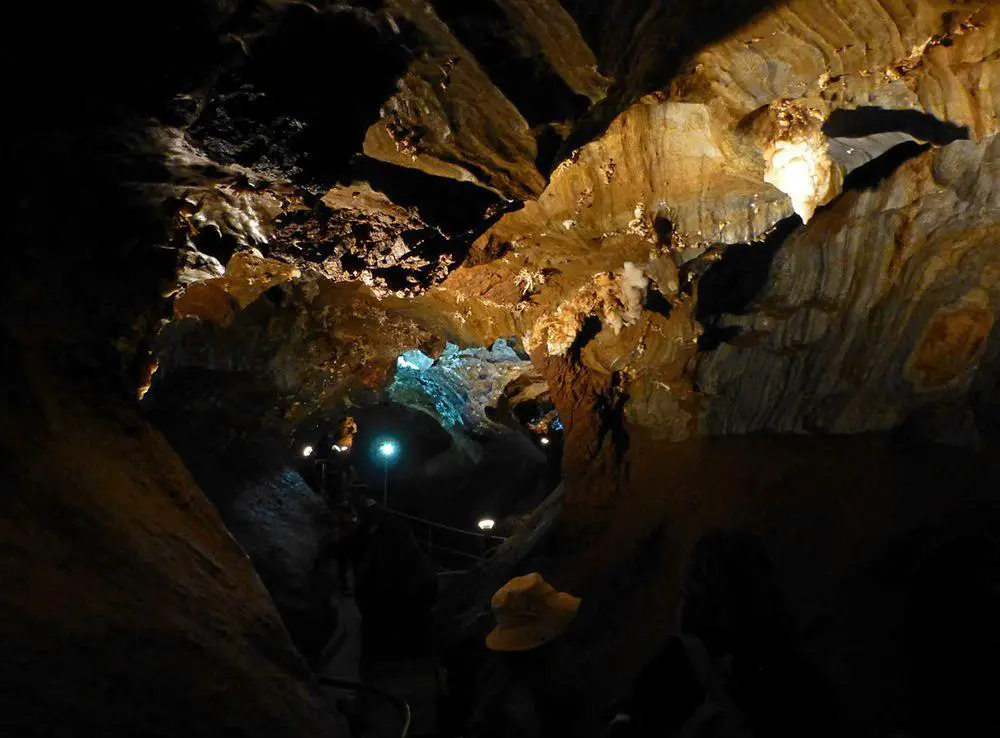
Ochtinska Aragonite Cave was discovered in 1954 by Martin Cangár and Jiri Prosek during the search for iron ore. The cave had no natural entrances: it was found by digging through the ground.
In 1972 the cave was opened as a show cave and now there is built a special tourist facility at its entrance. After paying a fee tourists can enter 230 m far in the cave. Especially impressive is Milky Way Hall which is covered with clusters of aragonite needles which resemble stars in the sky.
Formation of the cave started some 780,000 years ago (2), when thermal waters started to solve a passage through Paleozoic limestone lens which is located between Devonian phyllites.
This is so called cryptokarst cave where some natural processes have brought in sediments and then these sediments were transported away – but there are no traces of underground river or entrances. Most likely the cave formed through small fissures.
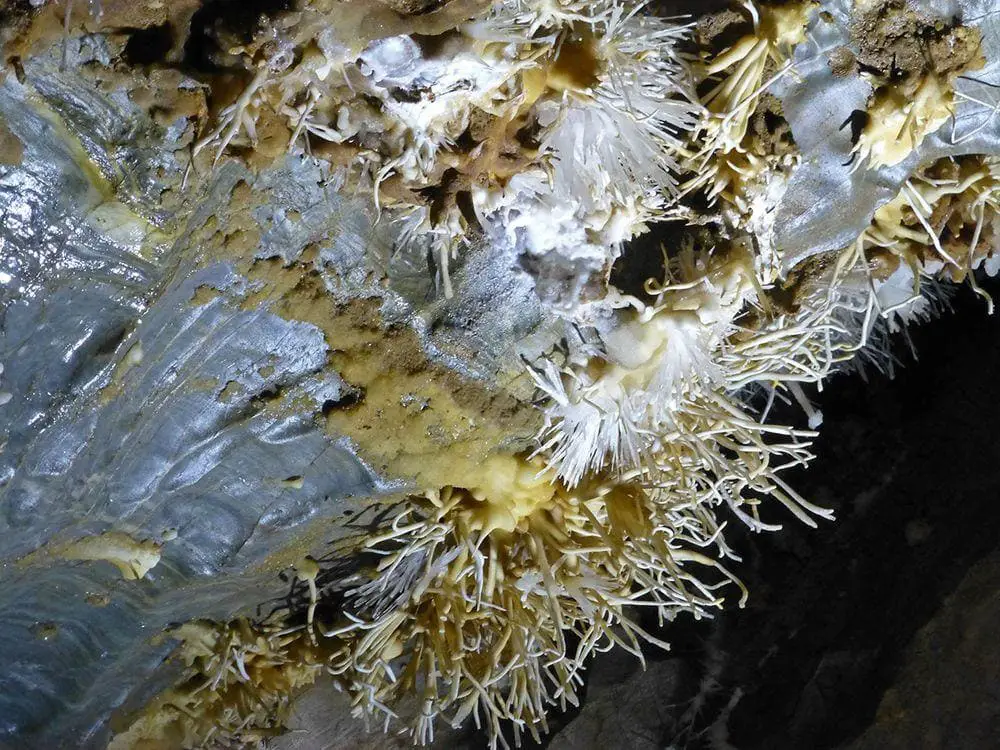
Aragonite crystals in the cave are very diverse. The oldest have kidney-like forms. Much younger are anthodites (clusters of needle-formed crystals) and helictites – curving and even spiral crystals. These crystals have been growing in the cave up to recent times and are bright white.
Other aragonite caves
Although aragonite is not a very rare mineral (it is found in all mollusk shells), aragonite crystals in caves are not too common. There are just a few caves in the world that are covered with aragonite crystals. Some smaller caves with interesting aragonite formations are located near the Ochtinská Aragonite Cave, but elsewhere in the world there exist also large caves which contain beautiful aragonite crystals. Some of these caves are:
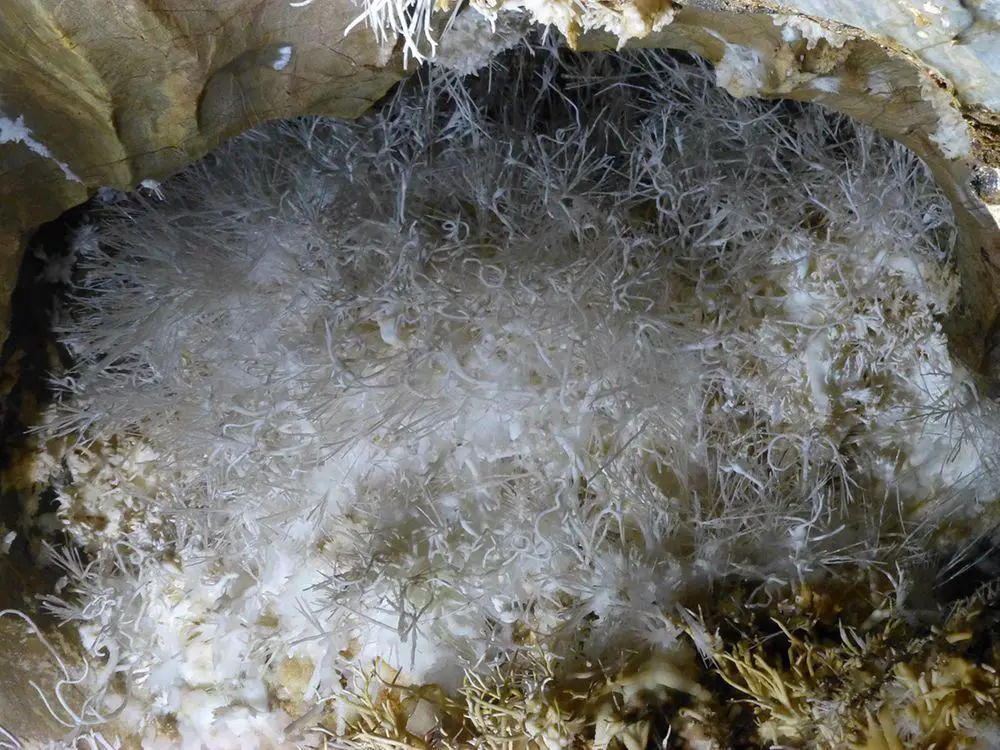
- Caverna da Torrinha (Brazil, Bahia);
- Caverna El Templo (Argentina, Neuquén);
- Caves in the West Camp of the Santa Eulalia (Mexico, Chihuahua);
- Lechuguilla Cave (United States, New Mexico);
- Pool of Cerberus in Jenolan Caves (Australia, New South Wales);
- Stary Hrad (Slovakia, Žilina);
- Zbrašov Aragonite Cave (Czechia, Olomouc);
Nevertheless, Ochtinská Aragonite Cave if one of the most beautiful and most accessible aragonite caves.
References
- P. Bella, J. Hlavac, P. Gazik. Protection and Management of Show Caves in Slovakia, 13th International Congress of Speleology, July 2001. Accessed on July 18, 2016
- P. Bosak, P. Bella, V. Cilek, D. C. Ford, H. Hercman, J. Kadlec, A. Osborne, P. Pruner. Ochtiná Aragonite Cave (Western Carpathians, Slovakia): Morphology, Mineralogy of the Fill and Genesis. Geologica Carpathica, 53, 6, December 2002. 399 – 410.
 Linked articles
Linked articles
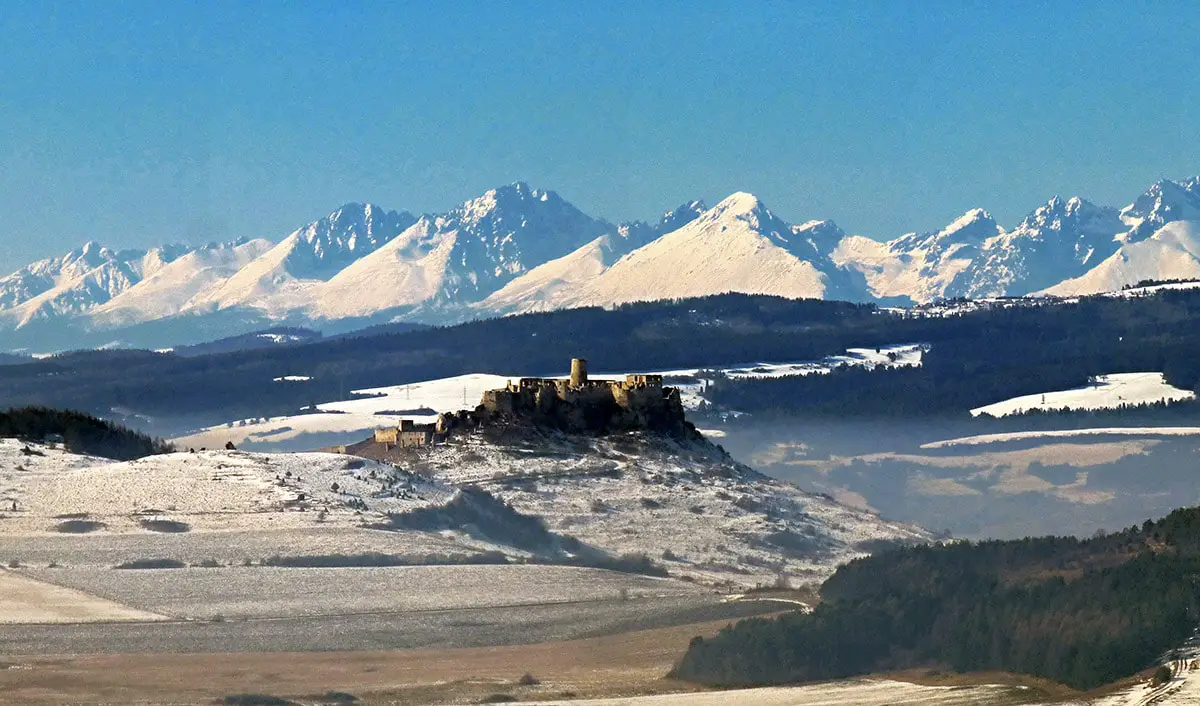
Wonders of Slovakia
This little and charming country has a good share of beautiful landmarks – both natural and man-made. The most interesting ones here are historical towns and villages with traditional architecture, several very impressive castles, and countless gorgeous caves.
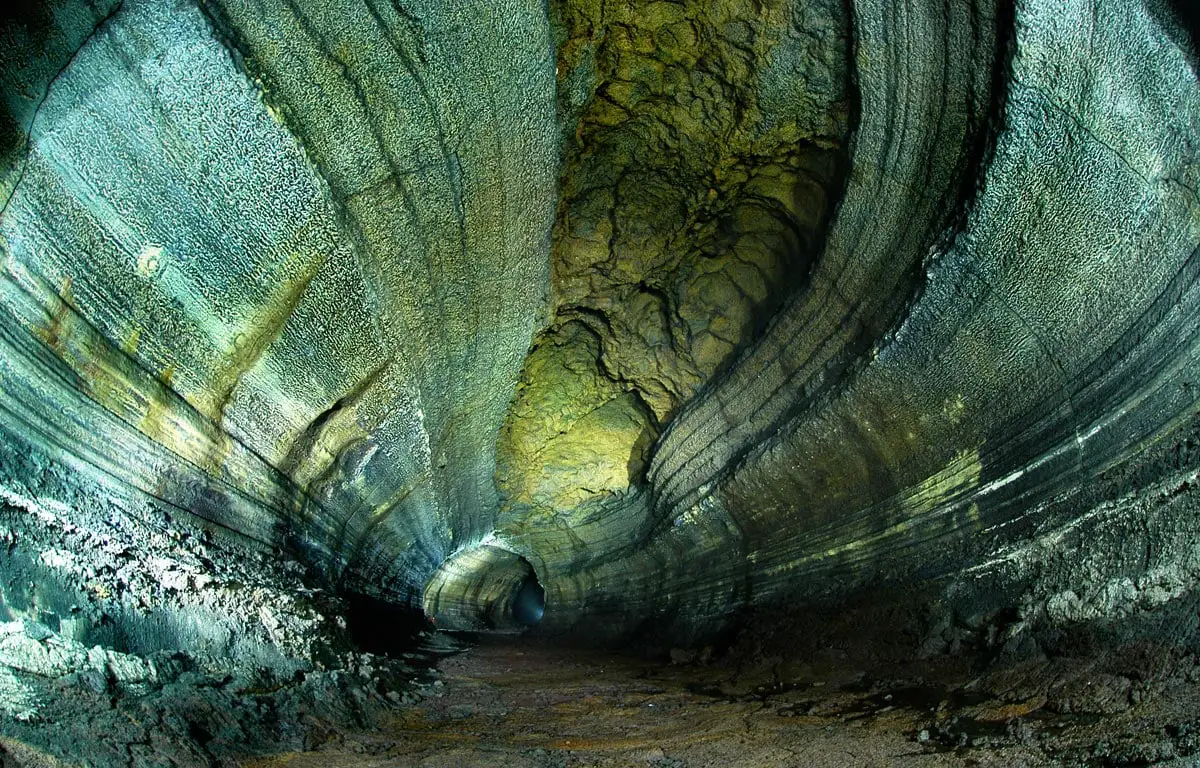
Caves
Every year there are reported exciting discoveries of new caves and discoveries of new qualities such as cave paintings in the ones known before. But there still is a feeling that our knowledge covers just a small part of all these monuments of nature.
Though, those which are known to us, offer a surprising diversity of unusual features and impressive sights.

Wonders of Europe
The heritage of Europe is diverse and endlessly interesting. Incomparably rich is the wealth of European historical architecture, but this part of the world has exciting natural heritage and archaeological heritage as well.
 Recommended books
Recommended books
Show Caves in Slovakia
Pocket-size and illustrated throughout, this informative bilingual publication on Slovak caves features the following chapters: – introduction; – karst territories and caves in Slovakia; – show caves in Slovakia (Belianska Jaskyna; Bystrianska Jaskyna; Demanovska Jaskyna Slobody; Demanovska Ladova Jaskyna; Dobsinska Ladova Jaskyna; Domica; Driny; Gombasecka Jaskyna; Harmanecka Jaskyna; Jasovska Jaskyna; Ochtinska Aragonitova Jaskyna; Vazecka Jaskyna); – glossary of technical terms.


